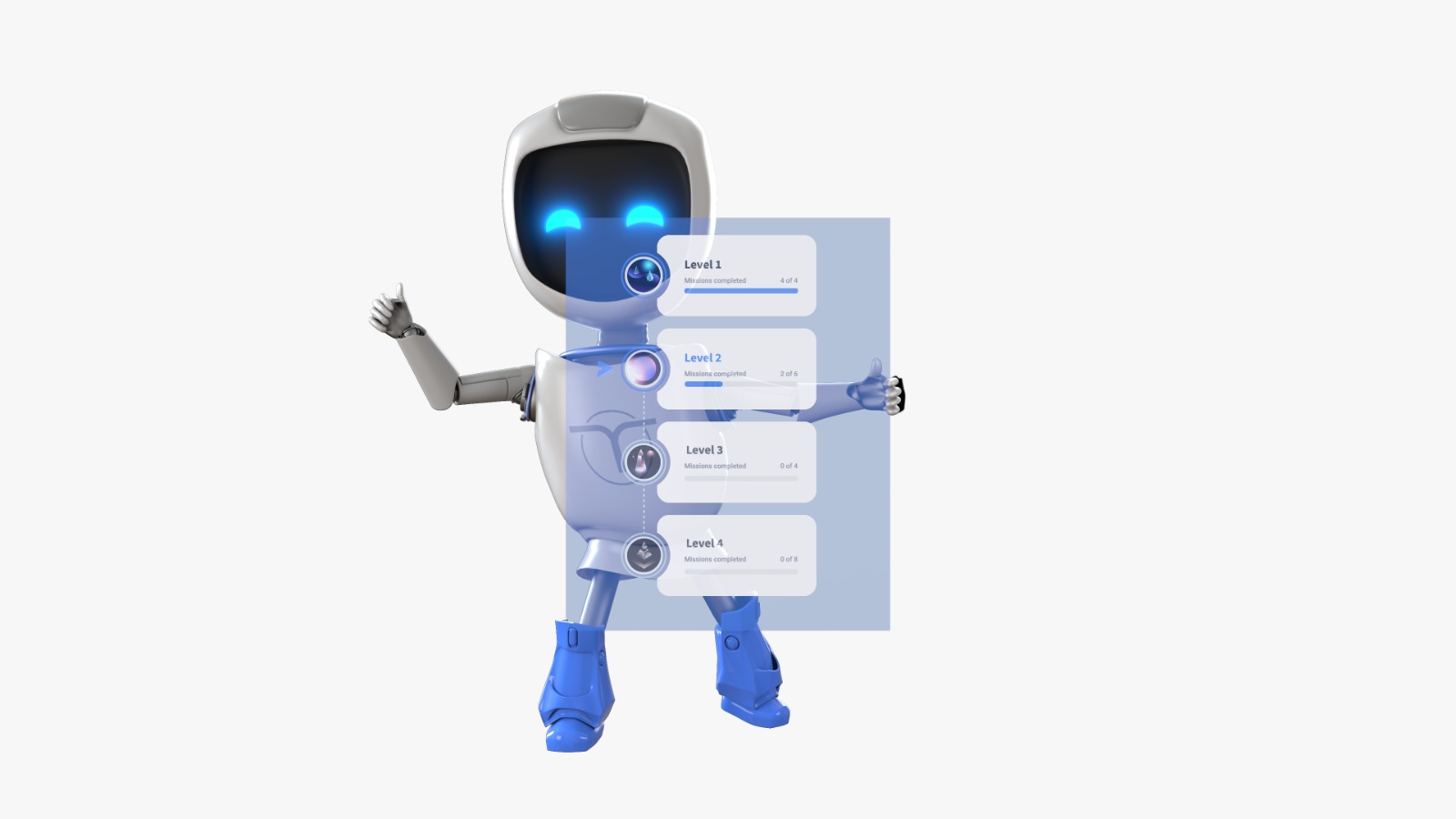Your new employee just handed in their resignation after only 30 days at the company. Now you’re left with a vacant position, wasted resources, and the daunting task of restarting the recruitment process. Then another new hire follows, and your business is slowly losing new talent. The reason? The absence of a strategic onboarding process.
HR experts agree that the first 90 days of an employee’s journey at a company are crucial for their long-term success at the organization. Studies show that 50% of newly hired employees plan to leave their jobs soon after joining, and 80% among those feel inadequately trained due to subpar onboarding. The issue runs deeper, as the costs of employee turnover vary from 30% to 200% of a person’s salary.
So, what is to be done? The answer lies in implementing a strategic onboarding process, preferably one structured in phases, like the 30-60-90 day plan, to ensure your new hires feel supported and engaged.
What is Strategic Onboarding?
Strategic onboarding is a long-term plan, developed by the company’s HR department and meant to integrate new employees into an organization so that they feel supported, informed, and aligned with the company’s goals and culture from day one. Unlike traditional onboarding, which often focuses on administrative tasks, strategic onboarding is a well-rounded experience that combines cultural assimilation, role-specific training, and relationship building.
Why is Strategic Onboarding Important?
Strategic onboarding is essential for setting new employees up for success and ensuring they integrate smoothly into your company. When done effectively, it not only creates a positive first impression but also accelerates their path to becoming valuable contributors.
1. Creates a Powerful First Impression
First impressions during a new hire’s first days shape their entire tenure. This critical period helps employees assess the organization’s culture, values, and whether their role meets their expectations. Thoughtful, purpose-driven activities, such as mentoring, team-building games, and interactive training, show that the organization genuinely cares about their success and integration.
This positive impression also contributes to the company’s reputation as an employer because new hires often share their experiences with friends and family, influencing perceptions and potentially attracting—or driving away—future talent.
2. Reduces Time-to-Productivity
Time-to-productivity is a crucial Key Performance Indicator (KPI) that measures how quickly a new hire becomes self-sufficient in their role and productive. This metric is particularly vital in fast-paced industries like sales, retail, pharmaceuticals, and healthcare, where every moment counts.
According to the MIT Sloan Management Review, new hires typically reach full productivity in 8 weeks for clerical roles, 20 weeks for professionals, and over 26 weeks for executives. To minimize this timeframe, onboarding helps through the implementation of measures such as role-specific training modules, regular feedback, job shadowing, and the setting of clear milestones.
3. Increases Employee Engagement and Reduces Turnover
Studies show that turnover is alarmingly high in the early stages of employment, with up to 20% of employees leaving within the first 45 days if they feel unsupported or unprepared. Effective onboarding helps reduce turnover by ensuring new hires feel supported, prepared, and engaged, and significantly boosts employee engagement by helping new hires quickly adapt to their role and company culture. Engaged employees are more likely to stay and perform better. According to Gallup, employees who go through effective onboarding are 2.6x more likely to be satisfied with their workplace, which builds confidence and long-term commitment.
The Parties Involved
The onboarding process does not only include the HR department and the new employee but also a number of other parties within the organization, including the new hire’s manager, team members, department leaders, and a designated buddy or mentor. To ensure success, organizations must adopt a collaborative approach and engage all these parties in the process.
By doing so, onboarding becomes a shared effort that benefits everyone: the new employee feels supported and valued, while the team gains a fully integrated and capable new member.
A 90-Days Onboarding Roadmap
While companies structure the onboarding period differently according to their goals and resources (including time, technology, people, and corporate policies), it’s up to every organization to find a cohesive and efficient model of integrating new hires, making sure that the process is beneficial for all parties involved.
The 30-60-90 days strategic onboarding model serves as a guide for HR and learning and development (L&D) professionals. It’s important to remember that this process takes time—no employee is expected to complete 90 days’ worth of tasks on their first day or even week. Patience and understanding are essential for a successful onboarding experience.
Pre-Onboarding
Contrary to popular belief, an employee’s journey at a new company begins well before their first day, so it’s crucial for company representatives to make a positive impression on the new hire before they even step through the office door. This is why pre-onboarding is vital. It provides the new employee with the necessary information and tools before their first day, laying the foundation for a strong bond between the individual and the organization.
Examples of pre-onboarding measures to consider:
- Welcome Email and Reminder: Send an email 2–3 days before their start date to welcome the new hire to the team and offer them essential details like the date, time, and location of their first day, a schedule, the name of their manager or buddy, parking information, directions, and whether a company-paid lunch is provided.
- Welcome Goodies Bag: Assemble a thoughtful kit with branded items like pens, notebooks, laptop cases, backpacks, or vests to create a sense of belonging and demonstrate care.
- Prepare the Buddy/Mentor: Choose a mentor or buddy to guide the new hire and ensure they are equipped for their role. Having a prepared mentor increases the chances of a better-integrated mentee.
- For Fully-Remote Employees: Send IT equipment, such as laptops and accessories, before the start date to ensure a smooth first day without delays
First Day of Work
The first day should be carefully planned to create a positive and productive introduction to the company. By the end of the day, the new hire should leave with confidence that they’ve joined a well-organized, supportive company.
Here is the employee’s first-day checklist:
- HR Orientation: Schedule a time for the employee to review and sign important company policies, benefits, and expectations with an HR representative. Provide them with necessary documents, such as their employment contract, tax forms, and any compliance-related materials. This is also an opportunity to discuss topics like workplace safety, PTO policies, and any unique perks the company offers.
- Technology and Tools Setup: Dedicate time to setting up the employee’s technology, such as logging into email, accessing shared drives, and understanding any software tools they’ll use daily.
- Manager Handover: Schedule a one-on-one meeting with the employee’s manager early in the day to outline the employee’s role, priorities, and long-term goals, establishing a sense of purpose and clarity from day one. The manager can also provide context on how their role fits into the team and contributes to the company’s success.
- Team Introduction: Either during a team meeting or through one-on-one conversations, introduce the new hire to the other team members. Encourage the team to share their roles and how they’ll collaborate with the new hire. Consider hosting a casual welcome lunch or coffee break for informal relationship-building.
- Buddy or Mentor Introduction.
- Light Responsibilities or Onboarding Tasks: Assign small, manageable tasks or onboarding exercises to the employee. For example, they could review training materials, familiarize themselves with past team projects, or explore internal resources to start understanding their responsibilities. This way, they feel productive without being overwhelmed.
First 30 Days of Work
The first month is a critical time to ensure a new employee feels supported, confident, and integrated into the organization, focusing first on settling in and then building a foundation through deeper engagement, training, and goal-setting.
Training and Development
Introduce the employee to their core responsibilities through role-specific training and development.
Instead of relying solely on traditional in-person training, companies are now increasingly turning to interactive and engaging digital platforms that support a more flexible and personalized learning experience. These platforms often utilize microlearning modules, which break down complex information into small, digestible chunks, preventing information overload. Interactive elements, such as video lessons and hands-on practice, allow employees to learn at their own pace and build confidence.
Additionally, employees have access to resources like knowledge bases and guides, promoting self-directed learning and reinforcing key concepts outside of formal sessions.
Building Connections
Encourage the new hire to participate in team meetings from the first week, giving them insights into workflows and team dynamics. Assign collaborative projects or opportunities to shadow experienced team members. Informal activities, such as team lunches, coffee breaks, or virtual meet-and-greets, also help strengthen these relationships.
For more efficient results, consider tailoring the L&D initiatives to a collaborative approach rather than singular work. By incorporating shared learning spaces and interactive tasks into your onboarding strategy, new hires can collaborate with peers and receive real-time feedback.
Relationship with the Manager
Frequent one-on-one meetings with the manager are vital during the first month to clarify expectations and address initial questions. As the month progresses, the focus can shift toward providing feedback on early tasks, tracking progress, and discussing long-term goals.
Days 30-60 of Work
Between days 30 and 60 of employment, the focus should shift toward deeper integration and skill development, with an emphasis on encouraging independence. By the end of this stage, the employee should feel more confident, capable, and aligned with the company’s objectives.
Training and Development
At this stage, the employee is working more independently and is becoming comfortable with their role.
Training should evolve to include more complex tasks and responsibilities, hands-on experiences, and problem-solving exercises. The employee should also have a clearer sense of their potential career path within the company, setting the stage for more formal goal-setting and alignment, which will occur in the 60-90 days phase of employment.
Interactive learning tools should still be used to reinforce knowledge while supporting this transition to greater responsibility.
Building Connections
The employee should participate in cross-functional team projects to expand their network and understanding of the company’s operations.
The employee’s relationship with their buddy should continue to provide guidance and exercises such as live shadowing to ease the transition to independent working.
Relationship with the Manager
At this stage, the manager should be able to observe any potential red flags in the employee’s performance or behavior and address them early. Timely communication of these issues helps prevent small problems from escalating and ensures the employee stays on track for success.
Days 60-90 of Work
Between days 60 and 90 of employment, the focus shifts to full integration and establishing a clear path for long-term growth. At this point, the employee should be working independently and taking on increasing responsibility, feeling confident in their role and aligned with the company’s goals.
Training and Development
At this stage, the employee has become fully independent in their role, with minimal need for supervision. Training should now concentrate on more advanced tasks, project ownership, and problem-solving in real-world contexts.
Building Connections
They should continue contributing to cross-functional team projects and initiatives, actively contributing to the company’s operations and culture. The need for the buddy or mentor fades, as the employee is now fully integrated and able to work independently with confidence.
Relationship with the Manager
The relationship with the manager should now center around setting clear, long-term career goals. The end of this stage is also the perfect opportunity to establish the employee’s KPIs.
Regular one-on-one meetings should focus on refining objectives, discussing future growth opportunities, and identifying areas for continued development.
Bringing Strategic Onboarding Into Your Organization
Strategic onboarding is more than just a one-time event—it’s a critical investment in your employees’ long-term success. By creating a structured, thoughtful onboarding strategy, organizations can ensure that new hires feel welcomed, supported, and aligned with the company’s mission from day one.
As your organization continues to grow, remember that onboarding should be an evolving process. Regular feedback, new learning tools, and continued relationship-building efforts will make sure that every new hire is set up for success, not just in their first 90 days, but throughout their entire journey with your company.
Platforms like Code of Talent can further enhance the onboarding strategy process by offering interactive, bite-sized learning combined with peer collaboration, access to internal expert support, and AI-driven personalization—helping new employees integrate seamlessly, build connections, and stay engaged from day one.
Photo: Freepik





